
Home > CICI News > What’s New

| Title | Korea CQ - Epilogue of lecture on 'The Beauty of Hangeul in Calligraphy' | ||||
|---|---|---|---|---|---|
| Posted by | webmaster | Hit | 3100 | Date | 2017.05.24 |
| Files | |||||
Dear Korea CQ members, I hope you are having a wonderful day. On May 23rd, Korea CQ had a lecture on ‘The Beauty of Hangeul in Calligraphy’ at the New Zealand Ambassador’s residence in Dongbinggo-dong. H.E. Clare Fearnley, Byung In Kang, H.E. Arslan Hakan Okcal, Pinar Okcal, H.E. Peteris Vaivars, H.E. Luis Fernando Serra, Rosana Serra, Lissa Miner, Eun Ja Min, Myung Hee Oh, Young Joo Lee, Kwiyeon Kim, James Park, Sumi Jang, Choi Jungwha, Didier Beltoise, Jae Won Choi, Young Tae Kwon, Sophie Kang, Hyun Ja Lim, Shin Jeong Kwon, Seung mo Kang, Jae-heun Kim, and Crystal Park attended this forum. 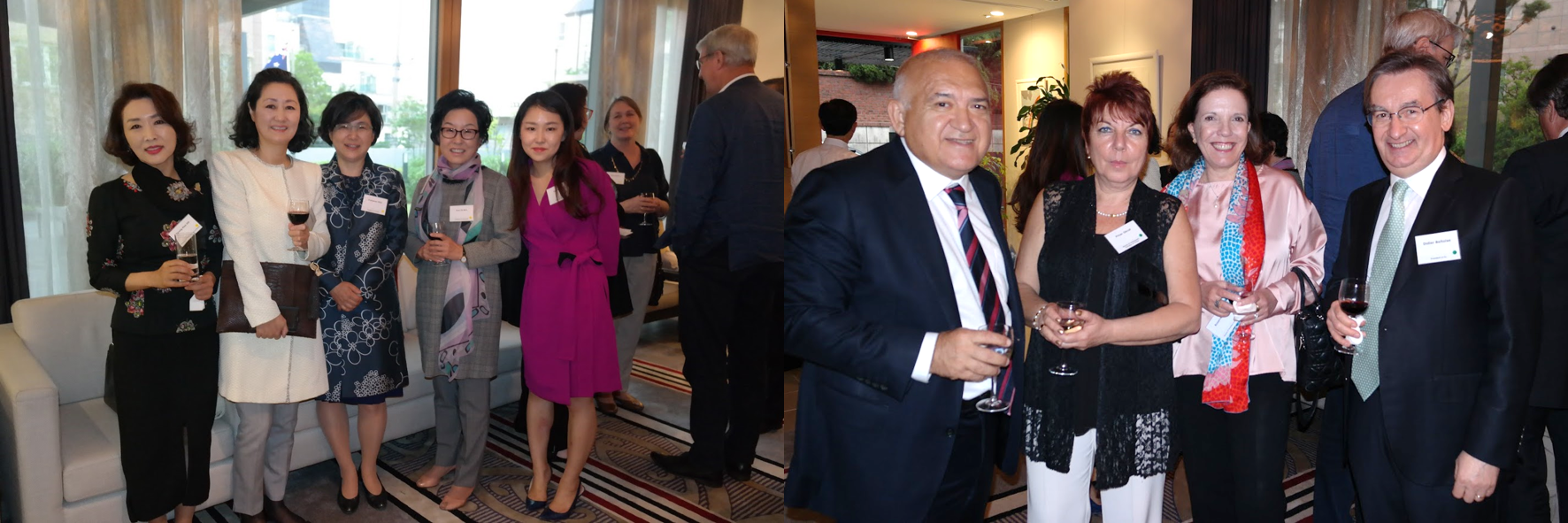
CQ members arrived on time and had time to catch up during the reception. 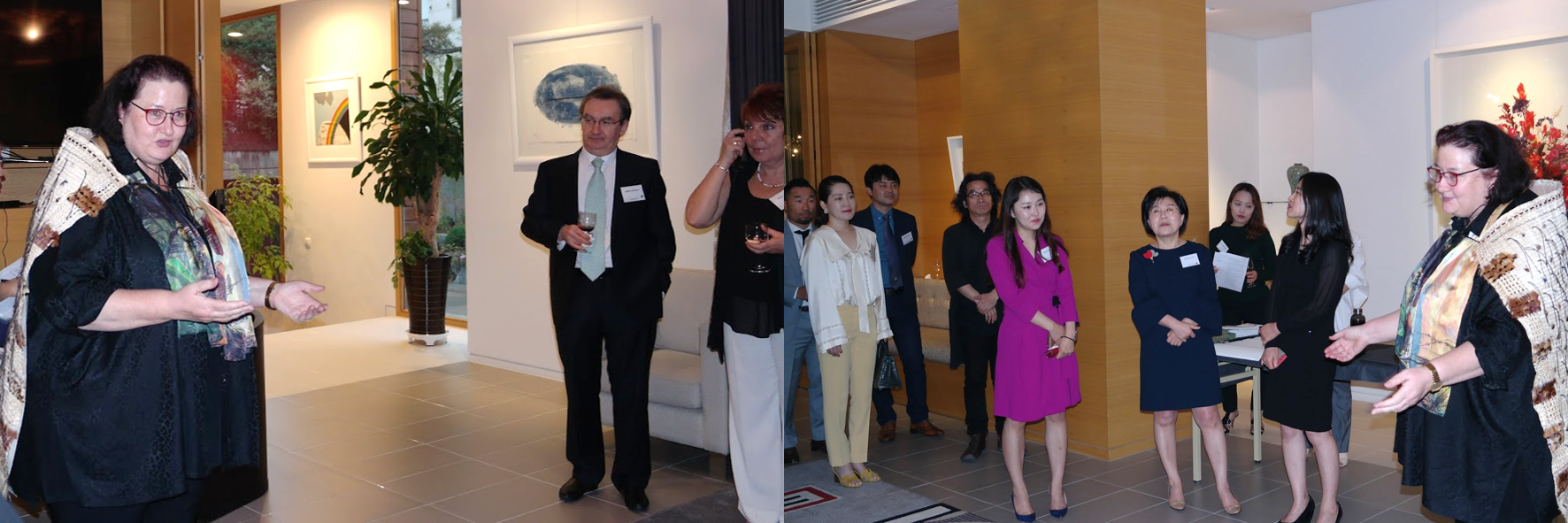
H.E. Clare Fearnley warmly welcomed CQ members with a warm welcoming speech with the Maori greeting “Kia ora,” followed by a video showing the beauty of New Zealand and a video on the activities of CICI. Before the lecture, members enjoyed rich and delicious foods and wines of New Zealand; Villa Maria wines, roasted capsicum and tomato soup, New Zealand greenshell mussel, and New Zealand fillet of beef with dauphinoise and seasonal vegetables. 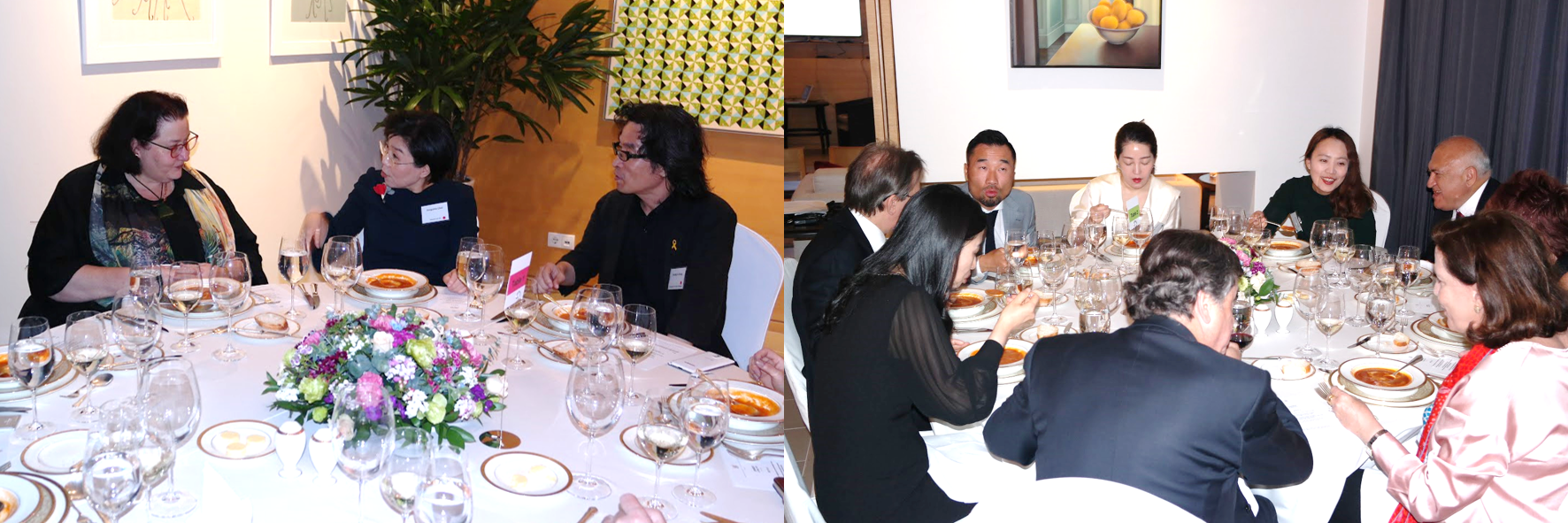
Dinner ended with the delicious dessert, pavlova with new Zealand kiwifruit and passionfruit syrup. After dinner, the lecture by Calligrapher Byung In Kang started. Mr. Kang is founder and President of the Sooltong Calligraphy Institute, and has designed some of the most recognizable calligraphy designs for a wide range of products in Korea, including soju brands ‘Chamisul’ and ‘Hwayo,’ titles for TV dramas such as ‘King Sejong’ and ‘Life is beautiful,’ movie ‘Secret Reunion,’ and many more. In this lecture, members learned about traditional and modern calligraphy, the difference between Eastern and Western calligraphy, and the principle of the invention of Hangeul, and also experienced calligraphy first hand. 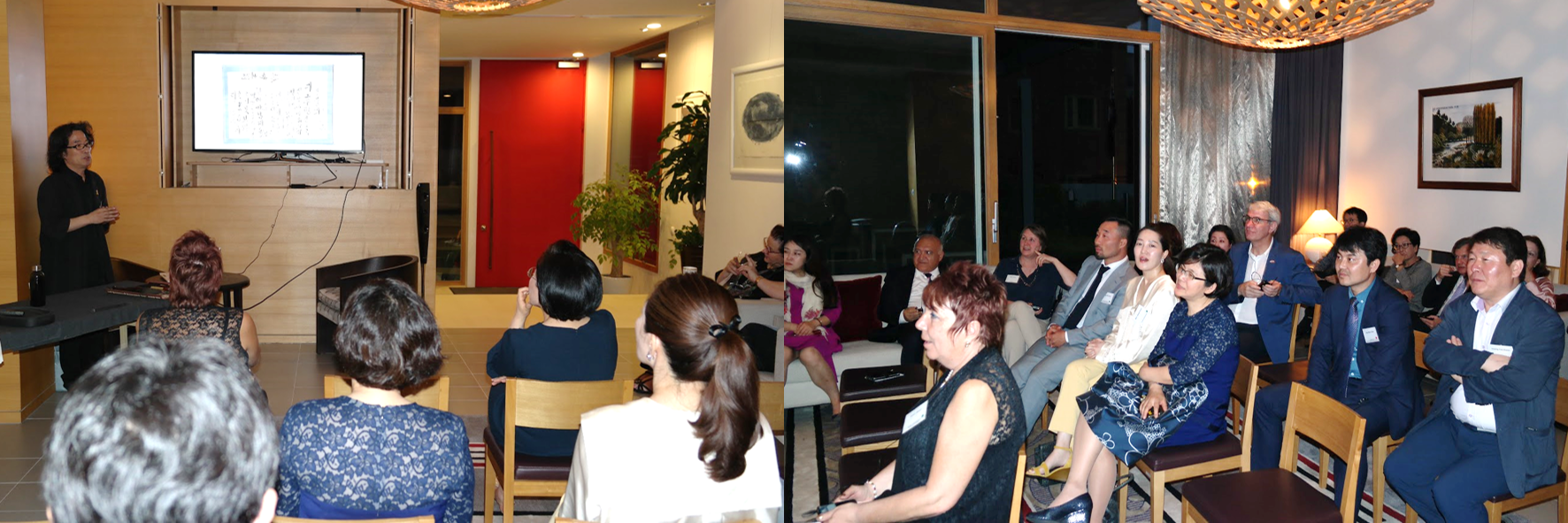
Mr. Kang worked as a designer, and he first experienced traditional calligraphy in elementary school when he was in 6th grade. He always contemplated how to show a reinterpreted version of traditional calligraphy, so that it fits the world we live in today. Every word has meaning, sound and shape, and he continued to research new ways to show these elements using calligraphy, and also steadily make efforts to show Hangeul in a new light as well as Hangeul’s artistic value. Through his efforts, Mr. Byung In Kang was able to fuse traditional calligraphy and design to create a new design field ‘calligraphy.’ This new field was started in the late 1990s, and today it has become a field that is developing into a professional career. There are differences in Western and Eastern calligraphy. Western calligraphy usually refers to decorative writing, while Eastern calligraphy refers to traditional calligraphy using a brush – today, it also includes modern calligraphy and design calligraphy. There is a great difference in the tools used in Western and Eastern calligraphy as well. Western calligraphy uses the tip of a feather or pen tips, which one can access and use easily but has limitations in expressions, while Eastern calligraphy uses a brush, which is more flexible and can be used to express not just the word itself but loudness or size of the word by changing the thickness or length of the writing, and also express emotions and the five senses of humans. 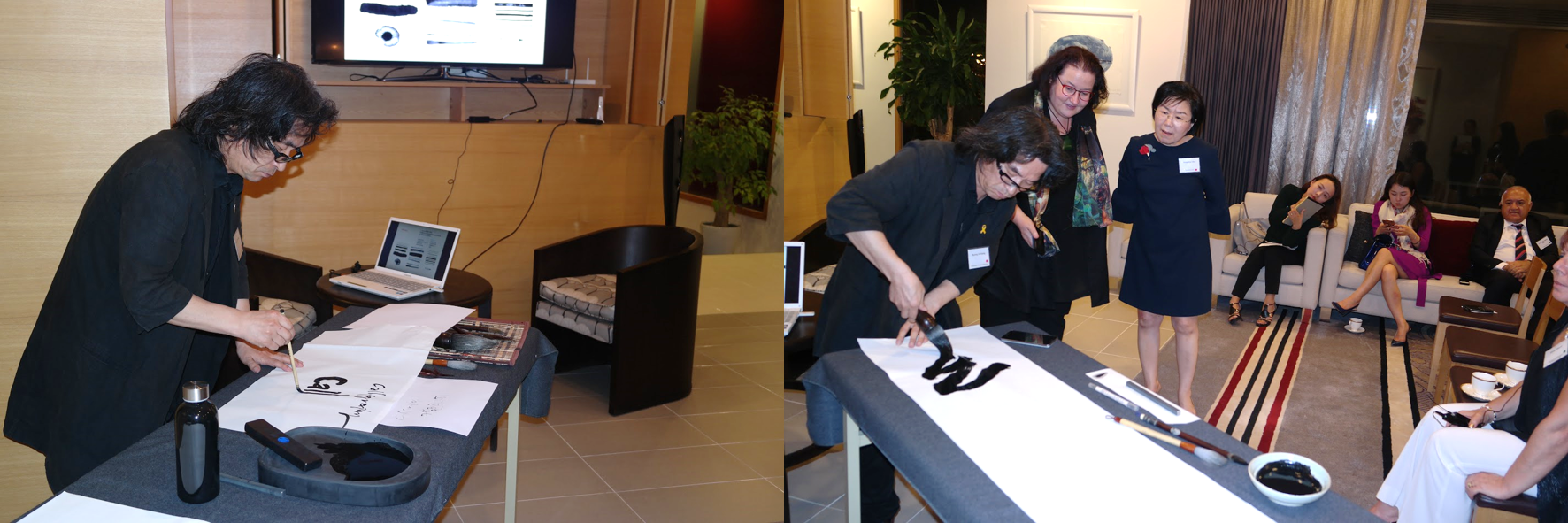
Hangeul was invented by Sejong the Great during the Joseon Dynasty in 1443, created so that the common people could learn to read and write easily, and it is considered to be one of the most scientific creative alphabets in the world. The main principle of Hangeul is based on the harmony between nature and humans. The basic vowel letters are shaped after the three basic elements of the universe; the heavens, the earth, and man; the dot(.) representing the heavens, the horizontal line (ㅡ) signifying earth, and the vertical line (ㅣ) representing man. The combination of the basic letters into different vowels is based on the principle of circulation, or the yin-yang theory. The most important part of Hangeul is that each syllable is based on ‘blending.’ A Korean syllable is divided into three parts; chosong, jungsong, and jongsong, and all three parts must be ‘blended’ or ‘stacked’ together to create a syllable. If the syllable is not stacked, and just written out separately in a line as in the English alphabet, it cannot show the artistic value, sound, or shape of Hangeul. Hangeul is not only a phonogram, but it has a hieroglyphic nature as well. By changing the length of the vowels, one can express the length of a sound and the meaning and energy of the word. Members could better understand the meaning of this through Mr. Byung In Kang’s works, which almost seemed to be drawings instead of writing. Mr. Kang concluded the lecture with his thoughts on Hangeul – that our lives and culture was able to bloom thanks to Hangeul – and he hopes to give joy and happiness to people through calligraphy. Following the end of the lecture, members experienced calligraphy first hand, using a brush to write in Korean. 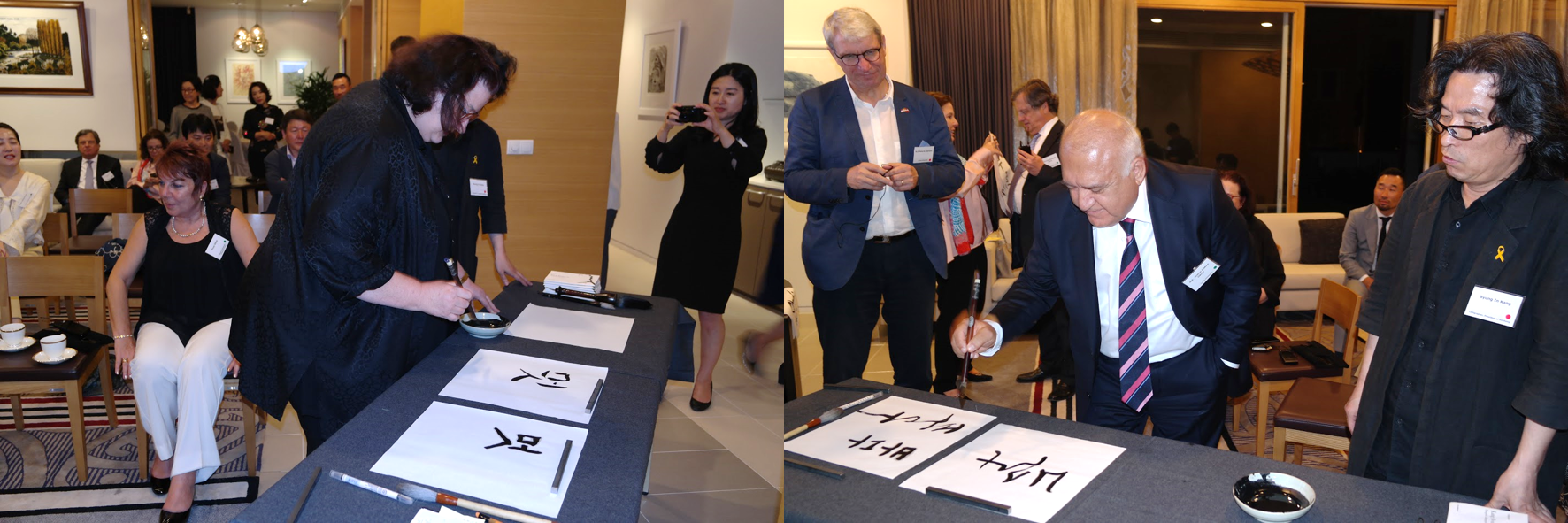
We deeply thank H.E. Clare Fearnley for her warm hospitality and the wonderful delicious New Zealand foods, making it an unforgettable night for Korea CQ members. We would also like to thank all members who attended the forum. We also give thanks to Mr. Byung In Kang for his interesting and informative lecture, and Crystal Park for her interpretation help. On June 13, Korea CQ will be having the Summer Welcoming Alumni Gathering. We look forward to our members’ participation. Thank you again for your unwavering support and we wish you a pleasant day. Korea CQ MeeJung Kim 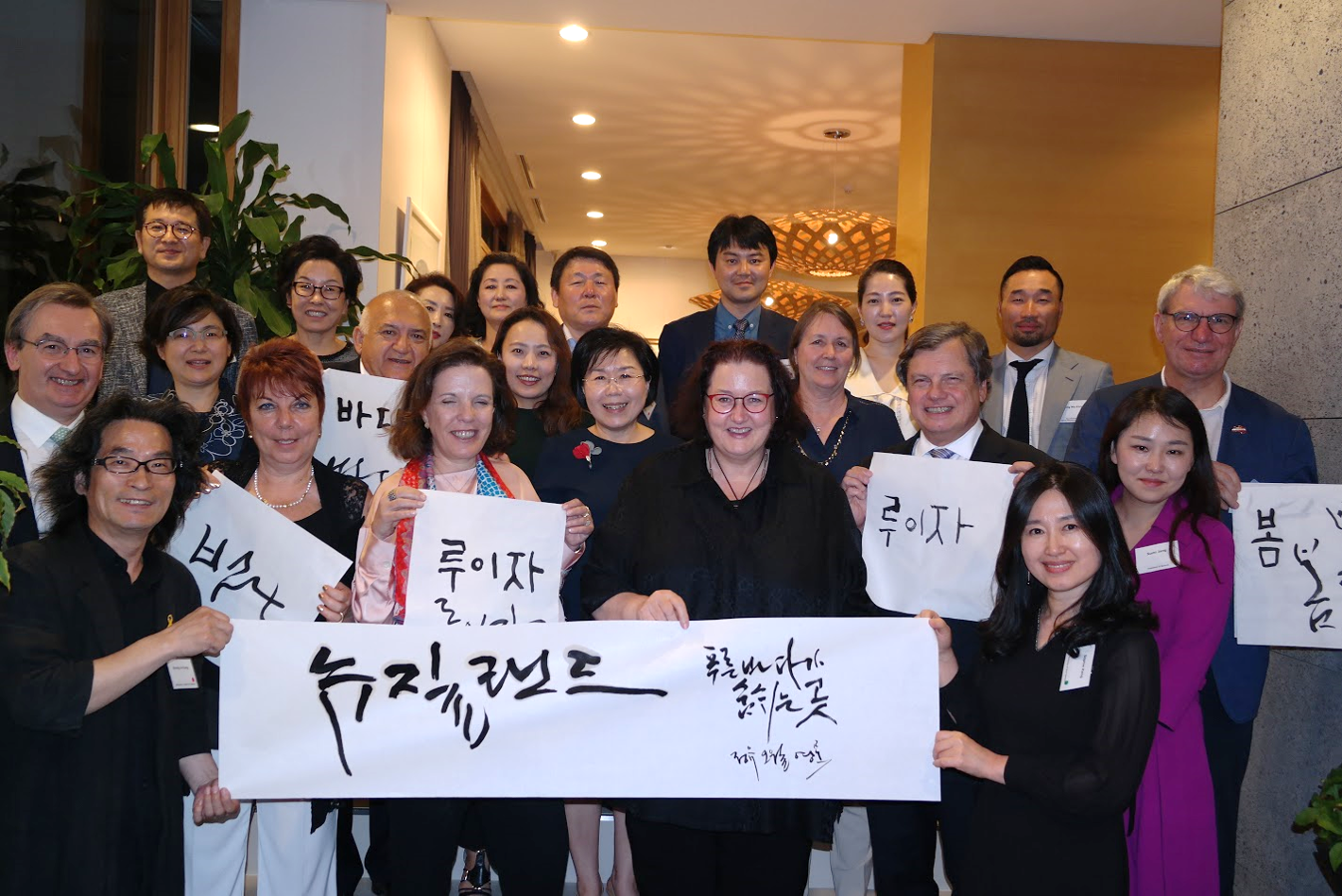
For more pictures, please click the link below. https://goo.gl/photos/hkUJdF2wyDmPsRPT6 |
|||||














